
Data will be shared in early 2024 regarding this potential treatment of diabetic retinopathy via eye drop.

Data will be shared in early 2024 regarding this potential treatment of diabetic retinopathy via eye drop.

This study compared AVT06 with aflibercept (Eylea) in patients with neovascular AMD.
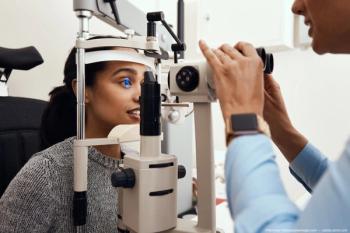
Catch up on a few of our top stories and ones you may have missed in 2023

The suspension is unrelated to product quality and will lift in February of 2024.

Government focus on preventing blindness as well as rising elderly population are key drivers behind this growth.

Boneva is an experienced surgeon skilled in trauma, surgical critical care, emergency surgery, and acute care surgery.

Umedaptanib pegol has potential to improve outcomes if used as a first-line medication prior to patients receiving treatments targeting VEGF.

Sblendorio brings decades of experience in the ophthalmic industry to his position on the Nanoscope board as the company continues to move forward in their commitment to retinal diseases.

The partnership will further the effort to bring VGX-0111, a gene therapy treatment for AMD to patients and providers.

The study saw encouraging results and helped to identify suitable dosing levels for future clinical trials.

The company’s lead ophthalmology candidate, EXN407, has the potential to be the first topical treatment for DR/DME.

Both oxidative stress and HIF-1 have been previously implicated in the development of AMD, but this research more clearly shows how cells are affected.

The augmented reality headset compensates for central vision loss to enhance the visual clarity of patients with age-related macular degeneration and other conditions such as Stargardt disease.

The Vision Council’s Q3 Provider Insights study shows the sentiments of eye care providers nationwide as they manage practices and patient care.
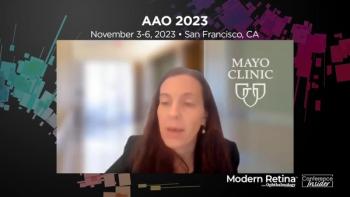
Sophie Bakri, MD, spoke with the Ophthalmology Times team about her presentation at this year's American Academy of Ophthalmology meeting titled, "Real world outcomes and treatment patterns with faricimab and AMD FA retina."

Mohammed Genead, MD, CEO of Aviceda spoke with the Ophthalmology Times team about the company's Phase II/III SIGLEC trial part 1 results, which were shared at this year's American Academy of Ophthalmology meeting.
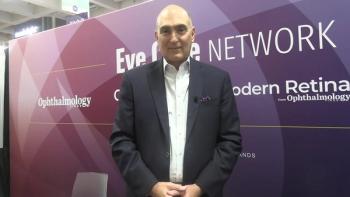
Rob Thornhill, CEO of Centricity Vision spoke with the Ophthalmology Times team about the company's newest developments at this year's American Academy of Ophthalmology meeting.

Marco A. Zarbin, MD, spoke with the Ophthalmology Times team about conducting a post-hoc analysis of the YOSEMITE and RHINE clinical trials and presenting the results at this year's American Academy of Ophthalmology meeting.

Mathew MacCumber, MD, PhD, FASRS, spoke with Modern Retina about his presentation at the recent Retina Society meeting in New York City titled, "0.19 mg Fluocinolone Acetonide (FAc) Implant Improves Vision and Treatment Burden in Patients with Diabetic Macular Edema: The PALADIN Study."

Diana Do, MD, spoke with the Ophthalmology Times team about her presentation of the results for the 96-week PHOTON study of aflibercept at this year's American Academy of Ophthalmology meeting.

Michael Rivers, MD, Senior Director of Ophthalmology at ModMed spoke with Modern Retina about their new single-screen initiative and the benefits it could have for saving time and simplifying communication within practices.

EURETINA 2023 highlighted important DME and DR research and data from across the globe.
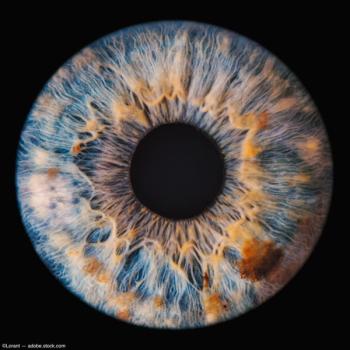
These companies will be among those sharing information and data in Boston, Massachusetts November 14-16, 2023.
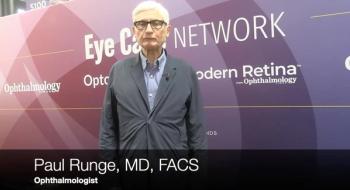
Paul Runge, MD, FACS, spoke with Ophthalmology Times about his time in Ukraine treating retinopathy of prematurity (ROP) and implementing the Norlase Lion laser at this year's American Academy of Ophthalmology meeting.
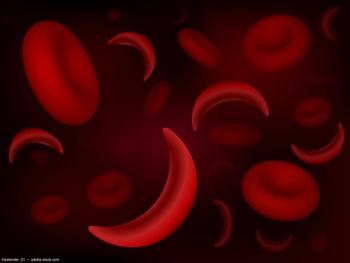
Study finds that 1 in 3 children with sickle cell disease has retinopathy.

The general public should use caution when reading AI-generated medical information as it may be inaccurate, misleading, or biased.

A new study focuses on the specific visual field conditions and defects that can result in an increased risk of vehicular accidents, particularly in the aging population.

Several companies including, Kiora Pharmaceuticals, Adverum Biotechnologies, and Aviceda Therapeutics, will share data at the meeting. Our team from Ophthalmology Times will also be in attendance.

This compound will be evaluated for the treatment of geographic atrophy (GA). The company shared that the first-in-human study is set to commence in 2024.

According to the company, AVD-104 is an engineered glycan (sialic acid) nanoparticle designed to target the self-pattern recognition receptors on overly activated retinal immune cells, specifically macrophages and microglia.